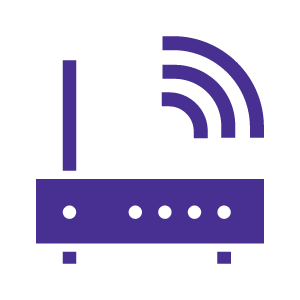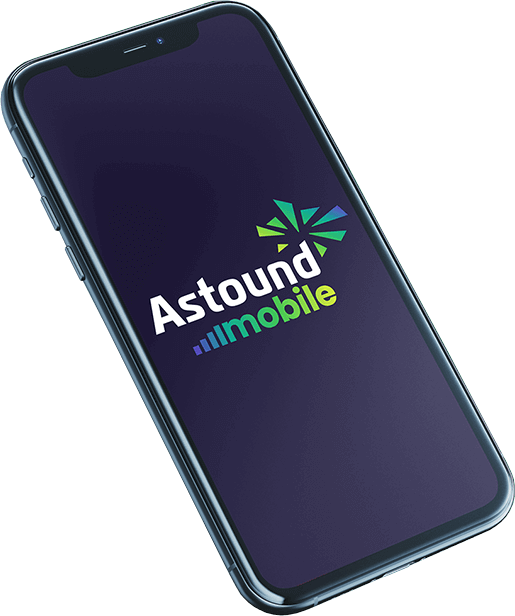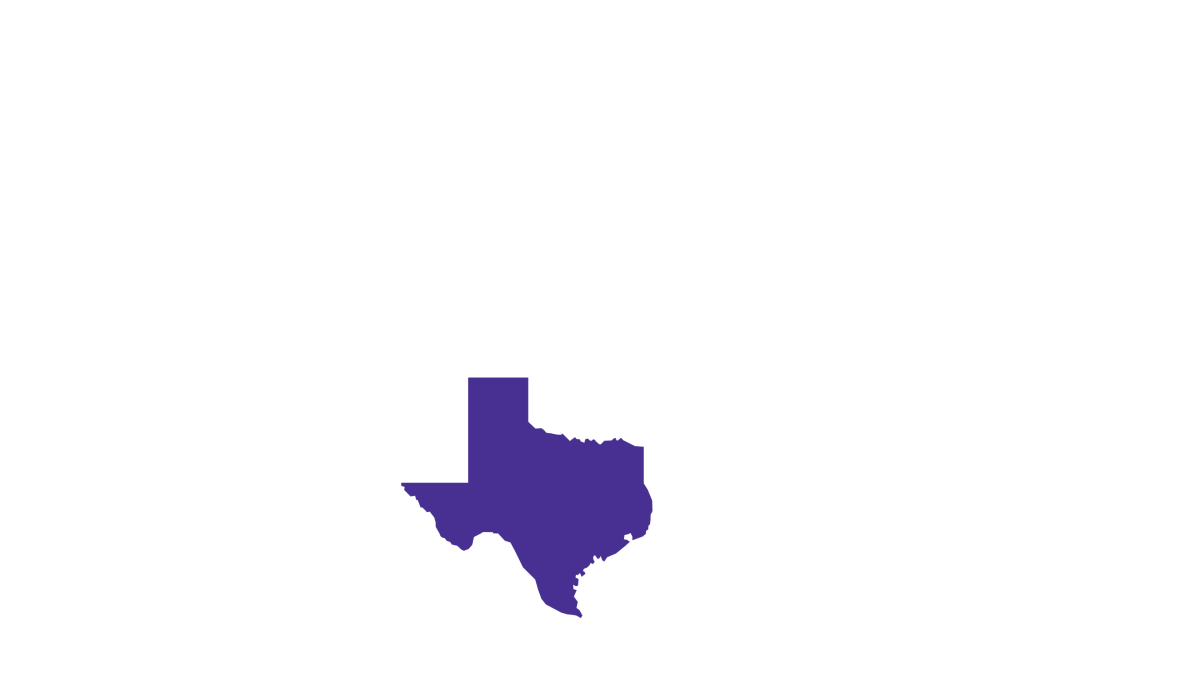What is mobile data & how does it work?

Mobile data is a key part of your monthly phone plan connecting your phone or tablet to the internet. In today’s world, we use mobile data for almost everything. You may not realize how much you use it until it runs out. In this article, we’re going to explain what mobile data is and how it works.
What is mobile data?
Mobile data, (also known as cellular data), is the digital information sent to and from the internet on a mobile device, such as your smartphone or tablet, when connecting to the internet over a cellular network.
It includes voice calls and text messages.
You can use mobile data on a smartphone or tablet to browse the web, check social media and email, and stream music and videos.
Cell phone or mobile data plan costs vary depending on service availability from a provider and your device.
You can choose from several different monthly plans that allow varying amounts of data usage and speed.
Understanding what mobile data is used for and how it works can help you assess your data costs and choose the right plan for your needs.
How does mobile data work?
![]() Mobile data works by using radio waves to transmit data between your device and a cell tower that operates within a cellular network.
Mobile data works by using radio waves to transmit data between your device and a cell tower that operates within a cellular network.
Cellular networks convert mobile data into digital signals, which allows us to access the internet on our wireless devices.
What does mobile data do?
The mobile data from your smartphone or tablet carries information to the internet and sends back whatever information you request in a text, email message, or web page.
Mobile data networks allow us to download apps, play games, stream videos and music, and send emails from anywhere we have cell coverage.
Mobile data network evolution
Mobile data networks constantly evolve as new technologies and devices are developed and released to the market.
The first mobile data network, 1G, was introduced in the 1980s and consisted of analog radio waves providing voice services only.
The amount of radio spectrum available to mobile operators limited their network capacity for data and digital technology was still in its early stages of development.
In the early 1990s, 2G (second generation) embraced digital technology, which allowed for more efficient use of the radio spectrum using digital signals versus radio or analog signals. It supported text messaging, but mobile data services weren’t available yet.
Smartphone revolution
The rollout of 3G followed in the late 1990s, allowing operators to offer more services, such as accessing the internet using cell phones for the first time.
3G technology also provided entry to video calling and the early stages of streaming with the launch of smartphones in the late 2000s.
However, 3G didn’t offer high speeds for data or strong reliability.
Still, it paved the way to transition into 4G LTE (Long Term Evolution) technology.
4G significantly improved from 3G because cellular networks could provide much faster data speeds to what is now known as mobile broadband.
However, accessing the 4G network required upgrading devices that could handle higher speed rates.
During the 2010s, the popularity of smartphones increased along with the amount of traffic on the 4G network.
In the spring of 2019, the US started rolling out the 5G wireless network to handle the increase in data users and provide faster speed.

5G supports more technologies and has greater bandwidth to increase wireless download and upload speeds significantly.
5G technology is the latest backbone to continue growing and supporting more innovative mobile technology.
WiFi vs. mobile data
WiFi is another way to connect to the internet from your phone or tablet, but it works differently than mobile data.
WiFi passes internet data through a local access point, such as a router in your home, office, coffee shop, or library.

WiFi can be much faster than cellular connections, but it’s dependent on the line of sight between your device and the router.
You’ll have mobile data or internet access wherever you have cell coverage through a cellular network service provider. The monthly data you use depends on how much you access apps and web pages, download or stream videos, or play online games.
Your phone plan may include a set amount of mobile data that you can use monthly, or it may charge you for every megabyte you use.
Knowing what your data plan includes and how much it costs will give you more clarity associated with your bill.
Data plans typically offer monthly packages in the following ways:
- By The Gig: Pay for what you use.
- Unlimited: Pay a flat monthly rate for unlimited use.
- Standalone: Pay for a packaged number of gigs with a single line.
- Shared: Pay for a packaged number of gigs pooled across multiple lines.
The terms and conditions of a plan will list all the details within a contract or service plan from your mobile provider.
You should review these carefully before signing up for any mobile phone plan to ensure you understand mobile data on a cell phone bill.
What uses data on a mobile phone?
Data use can vary greatly depending on the content accessed and the device in use.
 The amount of data accessed will differ from person to person, but here are some common ways that people use up their data:
The amount of data accessed will differ from person to person, but here are some common ways that people use up their data:
- Browsing the Internet
- Text messaging
- Checking and sending email
- Accessing social media
- Using mobile applications
- Music and video streaming
- Downloading and uploading files
- Playing games
- Online shopping
Understanding what uses data on your phone and what your phone considers mobile data will help you assess how you use your phone and how much data you need.
Should mobile data be on or off?
Whether or not you turn mobile data on or off on your smartphone depends on your service plan, data needs, and how you use your phone when you’re mobile.
The first step in managing your data usage is understanding what your phone considers mobile data.
This will allow you to leverage the settings available in your smartphone to help you manage your data usage based on your service plan and needs.
What is mobile data on an iPhone and Android?
On an iPhone and Android device, mobile data is called Cellular Data.
Both iPhone and Android devices define mobile data as any data transferred over the cellular network rather than via WiFi to perform associated tasks.
This includes text messages, emails, web pages, and other content sent over the internet.
Unlimited, limited, and throttling
Suppose you have an unlimited data plan associated with your service provider.
In that case, you don’t have to worry about turning your mobile data on or off. But what happens when you go over your data?
If you have a limited data plan you may pay overage fees or be subject to data throttling.
Data throttling happens when you’ve reached the limit of your data package and your data speeds reduce to a crawl.
If you’re concerned about using too much data over the cellular network, you can turn off your mobile data.
Typically, you can turn off your mobile data through your device settings.
On your smartphone locate the settings associated with internet or network connectivity, data, and mobile data usage to turn mobile data on and off.
Turning off mobile data means the apps on your smartphone won’t be able to use a cellular network for data. Instead, you’ll only be able to use mobile data when you connect to WiFi, which can help conserve your data usage.

How much data do you need?
The amount of data you need depends on how often you use your phone and what apps you typically use.
For instance, if you like to stream music or video content or play games on your phone, you’ll want a plan that provides a lot of mobile data.
However, if you only want to send text messages and occasionally check email, a smaller data package is all you’ll need.
You can also establish a usage baseline by monitoring data usage patterns from your smartphone settings or your bill to determine your mobile data needs.
Once you’ve established a usage baseline, you can figure out whether or not the features you want will require extra data, such as streaming music or video.

Choose a cell phone plan
Choose the cell phone plan that’s right for you. Astound Mobile has clear, simple pricing, no matter what your plan needs are.
Get Mobile + Internet Together
Find the mobile service, home internet and streaming that’s just right for you.
Astound Mobile requires Astound Internet service. Coverage not available in all areas. A trademark of Ziff Davis, LLC. Used under license. Reprinted with permission. Where available. © 2024 Ziff Davis, LLC. All Rights Reserved. All names, logos, images and service marks are property of their respective owners. ©2025 Radiate Hold Co., LLC d/b/a Astound Broadband. All rights reserved.
This website contains instructional information, including from third-party sources, and is intended, but cannot be guaranteed, to be always up-to-date, complete and accurate. Astound does not endorse, and is not responsible for, any third-party content that may be accessed through this website. Any representation or warranty by Astound that might be otherwise implied by information on this website is expressly disclaimed. Astound expressly disclaims all liability or responsibility with respect to actions taken or not taken based on any or all of the instructional information contained on this website. Astound does not warrant or guarantee the availability of any services at any specific time or geographic location or that services will be provided without interruption. Not all aspects of the Astound services function on all equipment and devices. Use of this website is subject to the Web Site Disclaimer and Web Content Accessibility Policy.




















